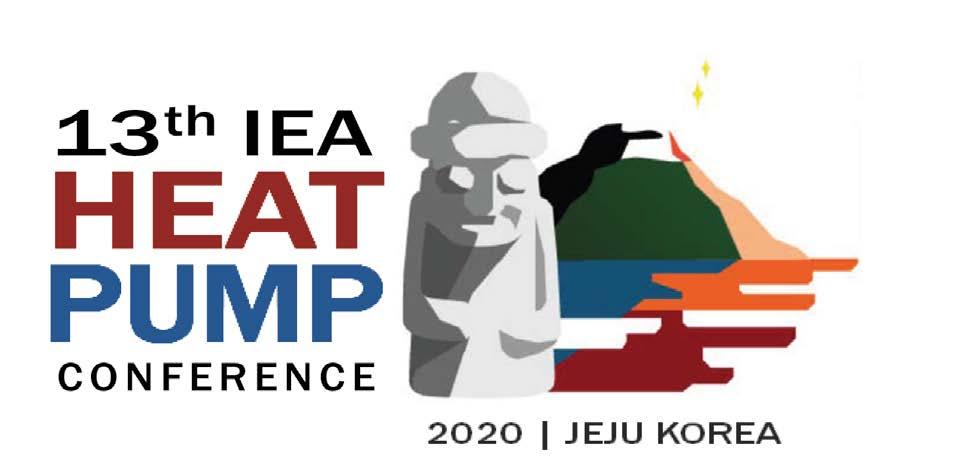
3 minute read
HPT News
from HPT Magazine Vol.38 No 3/2020 - Digitalization as an enabler for a robust, flexible and ...
by HPT Magazine
Date: 26-29 APRIL 2021
Online platform will be provided for the 13th IEA Heat Pump Conference
The 13th IEA Heat Pump Conference (HPC2020) will take place on April 26-29, 2021, as announced in the previous issue of the HPT Magazine. The conference venue will be Ramada Plaza Hotel Jeju, Korea.
However, due to the corona virus outbreak, there will also be an online platform for those who cannot attend the conference physically. Thus, we are aiming for a hybrid conference.
For authors, the full paper submission is due on November 30, 2020 as announced previously. So authors may submit new papers, and may also revise the submitted ones with additional information by this due date. This is the detailed submission schedule:
» November 30, 2020 Full Paper Submission Due » December 20, 2020 Full Paper Review done, Announcement to authors of accepted papers » January 15, 2021 Final Full Paper Submission Due (for the new submitted papers) » February 28, 2021 Pre-registration Due Still, a number of changes along with the transition of the conference are under discussion. Detailed updates and changes will be announced promptly on the conference website http://www.hpc2020.org and via www.heatpumpingtechnologies.org.
Although the conference has changed several times, we appreciate your patience, understanding and strong support of the HPC 2020. We hope you stay safe and healthy, and we are looking forward to seeing you at the conference!

Fig. 1.

At the recent meeting of the Executive Committee (ExCo) of the HPT, Thibaut Abergel made a presentation on the cooperation between the IEA and HPT. Part of this speech also focused on the recently released publication Energy Technology Perspectives 2020 (ETP 2020), in which the work of HPT was integrated to define the role of heat pumps in a net-zero emissions energy system.
In ETP 2020, the IEA sets out a pathway to reach a net-zero emissions energy sector by 2070: a Sustainable Development Scenario, compatible with the Paris Agreement and other Sustainable Development Goals. The wealth of information that feeds into this scenario – including the analysis and modelling of over 800 technology designs – could have only been possible thanks to its Technology Collaboration Programmes, of which HPT provided significant input.
Achieving net-zero emissions buildings while ensuring energy security relies on three pillars, namely a) deployment of early adoption technologies; b) buildings integration with the energy system; and c) clean energy innovation.
Heat pumping technologies are at the forefront of pillar a). They are already well settled in the new construction market in many countries around the globe, and can be applied to many types of buildings and climates. Heat pumps also offer the possibility to enhance the flexibility of heating provision and meet pillar b) objectives. Systems integrating storage units and/or controls can deliver on demand-side response services, while heat pumps in district energy systems can provide flexibility at the utilityscale. For pillar c), projects under HPT Annexes show how innovative heat pumps are essential to ensure scalability.
Sales of heating equipment for buildings still are dominated by fossil fuels today (Figure 1). However, heat pumps become the primary heating and hot water provider to residential and commercial buildings in the Sustainable Development Scenario at net-zero emissions.
The ETP also found that the demand for cooling will grow much faster than the demand for heating. Since heat pumps can be reversible, there is a great opportunity to take advantage of cooling demand growth, offering the end-user to use a single piece of equipment, with a dual function. Then, economies of scale could generate a “spillover” benefit and make heat pump costs 15% lower than they would have been without this market push. Thus, there are a number of synergies to be exploited for the decarbonisation of heating and cooling.
Therefore, heat pumping technologies need to become the first heating provider for buildings, and policies fostering mass deployment, integration to the energy system and innovation are key to achieving this goal.
THIBAUT ABERGEL
Desk officer for the HPT TCP, IEA




